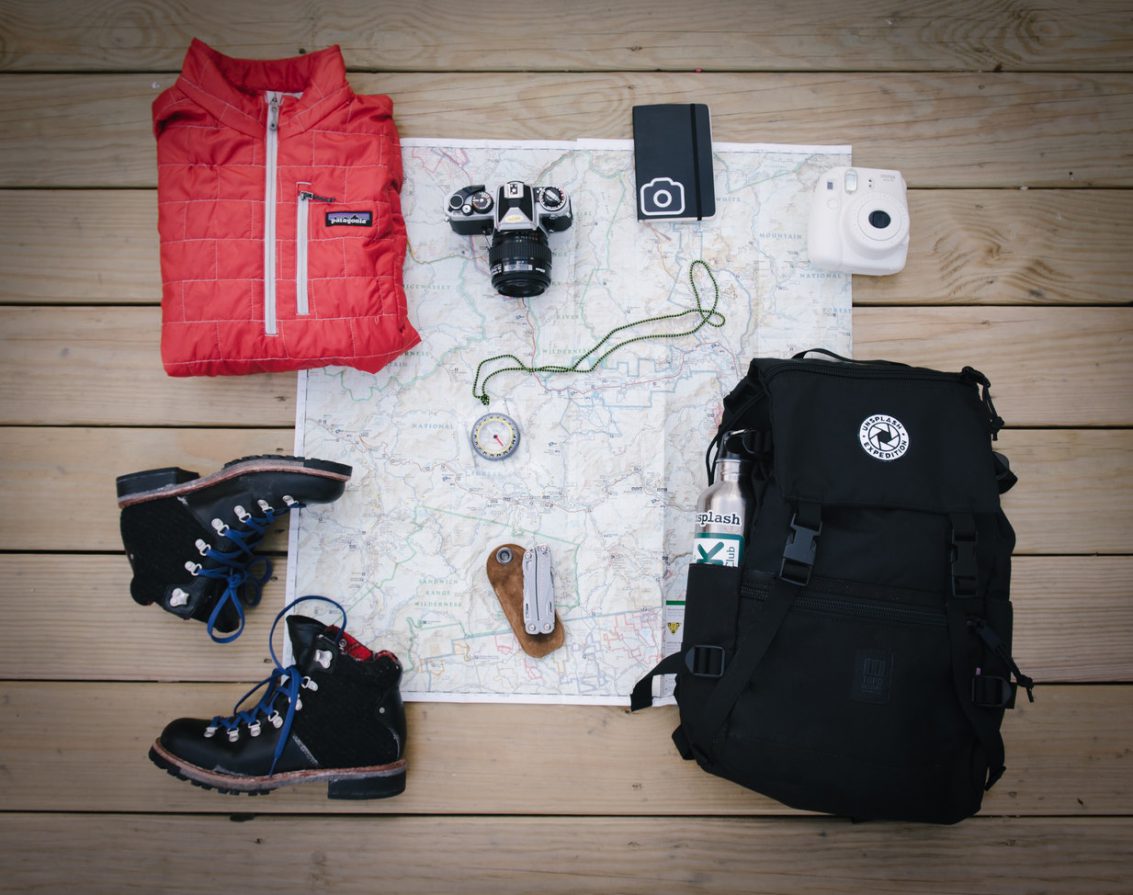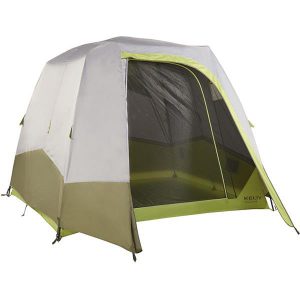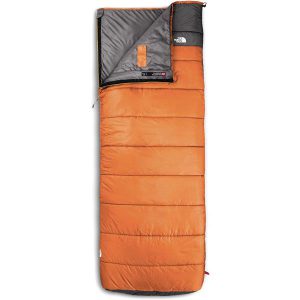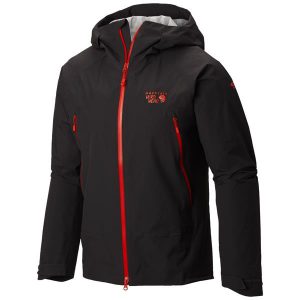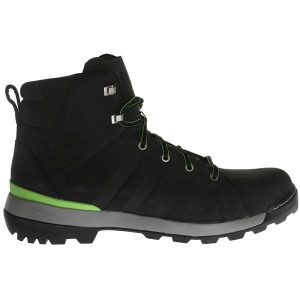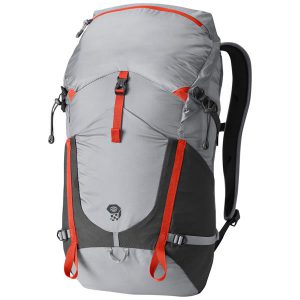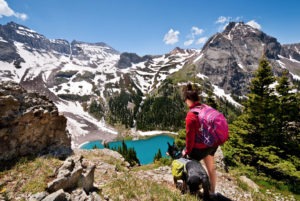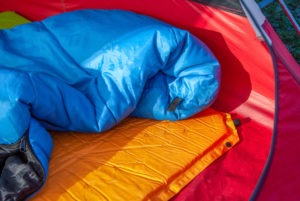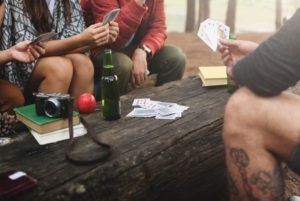Let’s be honest. Camping can be an expensive endeavor. From tents and sleeping bags to backpacks and boots, the gear you need to go camping can empty your wallet pretty fast. That’s why it’s essential to stretch your dollar as far as you can. Below are some tips for cleaning, repairing and storing your gear when you’re back home, so you can keep your equipment in excellent shape year after year.
Tents
Your tent is arguably the most important thing to keep in good shape. For one, they’re expensive. But more than that, it’s the part that really separates yours from the elements. If you don’t take good care of it, you may be forced to find shelter in your neighbor’s RV, who sees you shivering and pity you… I speak from experience.
Tidy up. When you’re on your way back from a trip, it’s important that you take the time to shake your tent free of coarse debris. When you store it full of dirt and dust, it can rub away at protective coatings that are essential for it to function properly. It’s as simple as shaking it out, or going in with a vacuum hose. Wipe down the fly and body with a diluted soap solution, paying special attention to any mildew you might find. If you’ve got sap stuck to the outside, try rubbing it with an ice cube to freeze it, then break it off. You can also try placing wax paper on both sides and ironing it gently to melt the sap, it should stick to the paper.
Fix it up. Tent repair can be a bit tricky, but it’s also easier than you might expect. In some cases, consulting your local gear shop for the fix may be the best solution, but minor tears can be easily fixed. Tent seam sealant helps reinforce the seams to ensure that stay waterproof. Mesh repairs are easily fixed with a mesh-repair kit. If you have snags, simply work the fibers back in forth gently with your thumb until they are back in place. This will help keep critters out in the long-run. If you’ve got a sticky zipper, rub a wax candle along the teeth and slowly work the zipper over it until it moves smoothly.
Pack it up. Your tent spends most of its time in storage, ensuring you store it properly is essential. When you’re packing up, fold carefully along the seams of the tent. This helps prevent cracking of protective coatings. Roll it up tightly, don’t crumple it; crumpling takes a toll on the protective coatings. Wherever you store, try not to stack other, heavier things on top of it. Making sure you clean and store your tent carefully, this can help it last for years.
Sleeping Bags
Have you ever slept on a bad sleeping bag? You may have been roused awake by the fact that you were shivering, or you didn’t sleep at all because a lump of fill was digging into your back. Furthermore, it might just smell bad. Smelly sleeping bags are gross. Don’t be gross.
Tidy up. Cleaning a sleeping bag is super easy, but there are some things to keep in mind. Ideally, you should be washing it at least once a year. You change your bed-sheets at least once a year, right? Right. Wash it cold in a front-loader or a top-loader without an agitator. An agitator will damage protective coating. Make sure to de-clump the fill afterward, and dry on a low setting. Check on it every now and again while it’s drying, as dryers can get hot and melt the fabric which is no fun for anyone.
Fix it up. Small tears are pretty common in sleeping bags, so don’t fret about them. They can be fixed easily with a needle and thread, patch repair kit, or even duct tape (never underestimate the power of duct tape). Don’t dry-clean your bag. If you start to see fill spilling out without a clear tear, I am afraid your time is limited to that sleeping bag, and it’s time to look for another.
Pack it up. Similar to your tent, most of your sleeping bag’s time will be spent in storage. So storing it properly is essential to longevity. First, make sure it’s nice and dry, damp sleeping bags will develop mildew and other less appealing colony life. It is also imperative that you don’t compress it, compression with almost certainly damage the fill and fabric treatments. When it comes to storing sleeping bags, high and dry is always a good rule.
Rain Gear
Tidy up. The issues you experience with rain gear are often a result of poor or infrequent cleaning. The porous nature of rain gear makes it particularly vulnerable to sweat, dirt, and grime, which in turn affects performance. For example, the ePTFE fabric is commonly used in rain gear, and features pores over the surface that rejects water, but also allows vapor to escape. These pores can be clogged by oils from the skin, soot from the campfire or dirt. Over time this will affect the quality of waterproofing. Fortunately, all you need to do is wipe it down with a gentle powder detergent. This should unclog the pores and keep it in great shape.
Fix it up. Most of the time, the issues you’ll experience with rain gear is related to whether it’s been cleaned or not. If waterproofing is failing, give it a wash and check the seams. If the seams are weak, coat them with a tent sealant like Seam Grip. If this still doesn’t do the trick, give it a DWR treatment to restore the waterproofing qualities. For tears, patch repair kits will do just fine.
Pack it up. Storing your rain gear properly will help it last longer than if you don’t. Make sure it’s dry before you put it away to prevent mildew. Hang your raincoat away from sunlight, and make sure it’s evenly pressed. For similar reasons as your tent, don’t crumple or compress it. Storing it in this way will keep the waterproofing in good shape for years.
Hiking Boots
Tidy up. Your boots are going to take the most beating of anything you take with you camping. Keeping your boots clean will help extend their lifespan significantly. Scrape off any caked mud, then wash with dish soap and a toothbrush, to help get in the grooves and crevices. This is also important to ensure that anything native to the place you’re camping, doesn’t come with you when you return home. This helps keep invasive species from spreading.
Fix it up. The two biggest problems you’ll face with your hiking boots are weakened waterproofing and loose or detached soles. Waterproofing can be fixed by adding a waterproofing agent similar to your rain gear. A loose sole is a bigger problem, and should probably be left to a professional at your local gear store. However, if you want to do it yourself, Shoe Goo is always a reliable option for reattaching your sole.
Pack it up. Hiking boots can be stored anywhere indoors. Just remember to clean them beforehand. It also helps to remove the mid-sole and store them separately if you can.
Backpacks
Tidy up. Odds are your backpack has never been cleaned, and your backpack takes a beating. It sits on the ground in the dirt, absorbs your back sweat and gets tossed about. If you’ve never cleaned your backpack, now is a good time to start. Packs are super easy to clean. Simply shake out the pockets and wipe down the inside with a damp cloth. If you use a washing machine, make sure you wash on cold to avoid damaging synthetic material. Always let your backpack air-dry, as a dryer will probably do more harm than good.
Fix it up. Sticky zippers, like the tent, can be loosened with a wax candle. Waterproofing can be added if you like as well.
Pack it up. Unlike your tents, sleeping bags and other gear, your backpack won’t spend a lot of its time in storage. You’ll probably be using it more often. Additionally, backpacks are pretty tough, so hang it wherever you normally would.
Repairing instead of replacing is a great way to flaunt your stuff as a camper and save a few bucks. Think of the civil war doctor whose jacket was covered in months or years worth of blood and pus, showing that he was the real deal (seriously, this was a thing). Maybe think instead of the Japanese art of ‘kintsugi’, repairing pottery with gold or silver. Each crack is a reminder of the vases unique history. In the same way, every patch on your tent and every seam sealed is a story to be told, and reflects your travels in a way that words can’t. Nothing lasts forever though, so if you do need to replace something, we’ve got just what you need. Adhering to these tips will keep your stuff in great shape for years to come, and that means more moolah in your pocket for marshmallows and Oscar-Meyer wieners.
